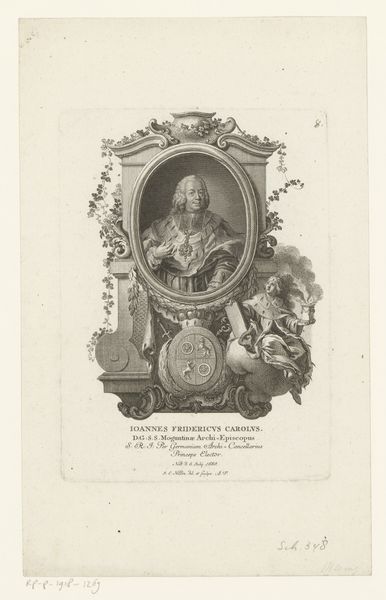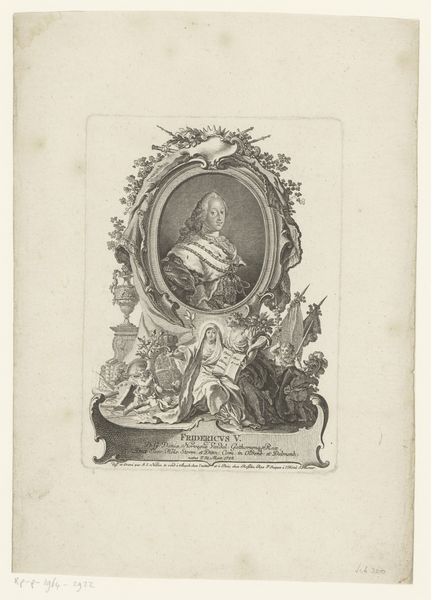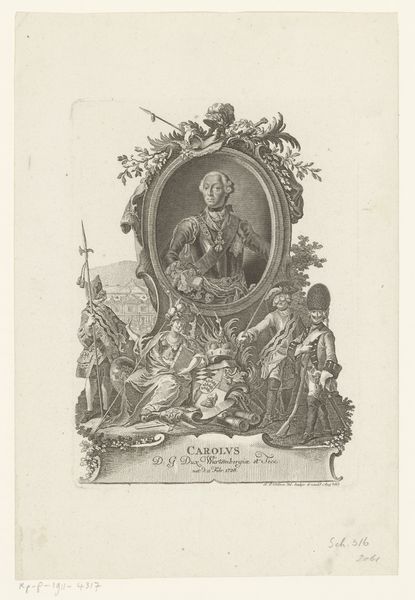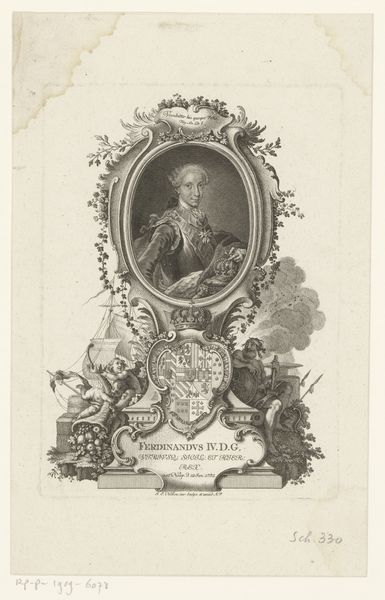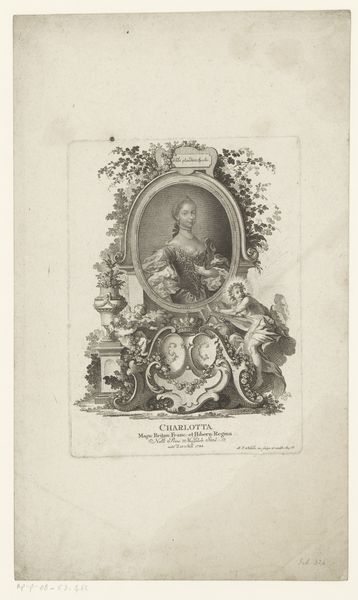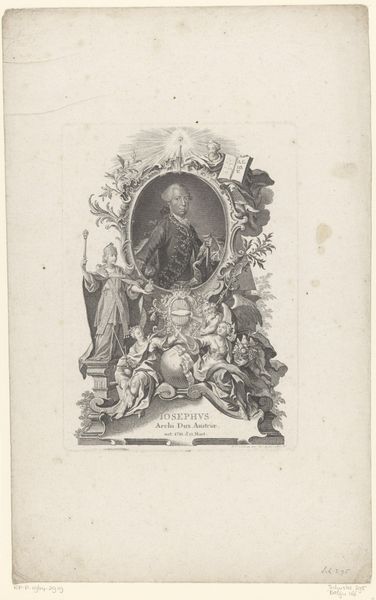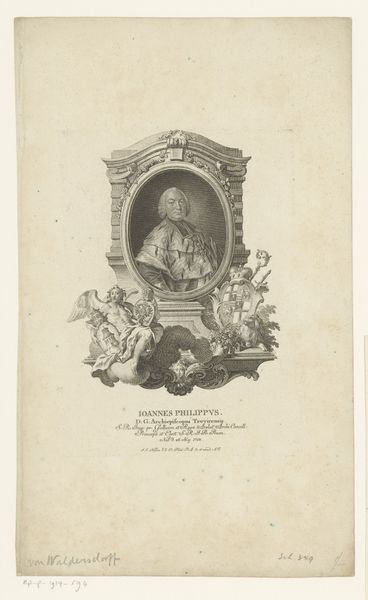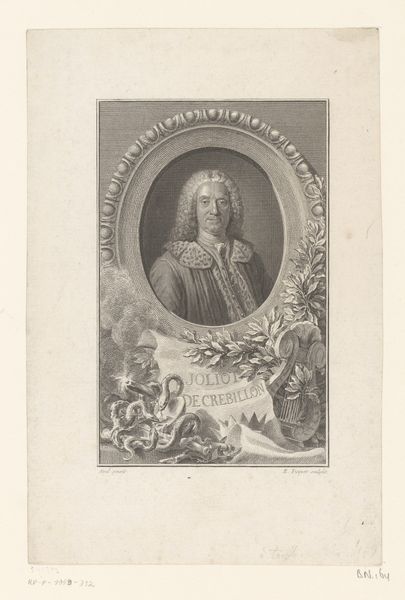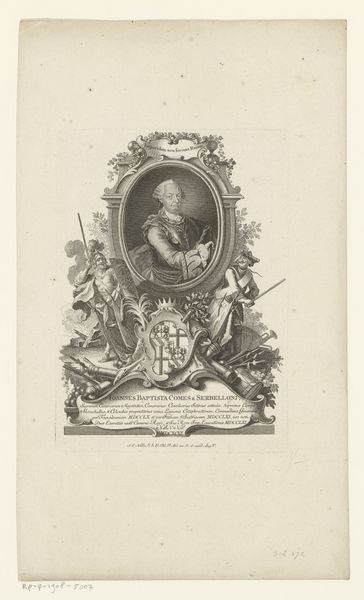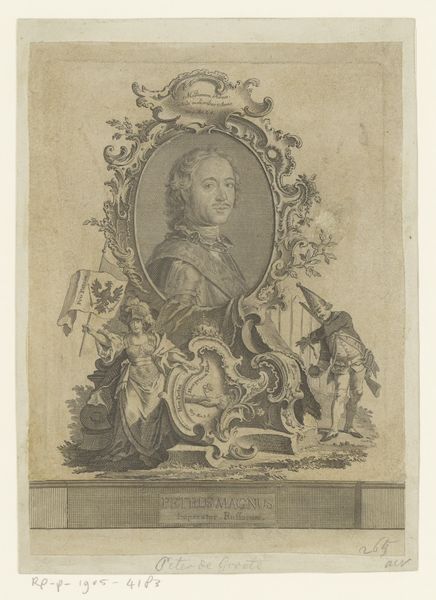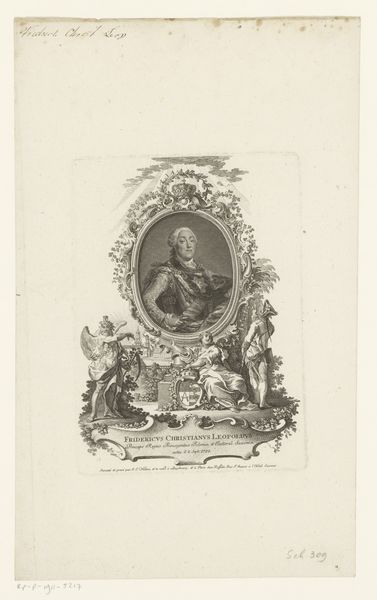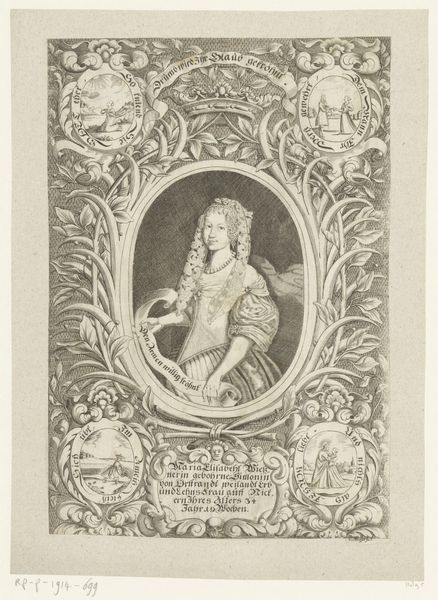
print, engraving
#
portrait
#
baroque
#
symbol
# print
#
old engraving style
#
15_18th-century
#
history-painting
#
engraving
#
realism
Dimensions: height 220 mm, width 160 mm
Copyright: Rijks Museum: Open Domain
Curator: Let’s take a look at this print of George II, King of Great Britain. It’s an engraving by Johann Esaias Nilson, dating from sometime between 1731 and 1788. The print is currently held at the Rijksmuseum. Editor: It’s remarkably detailed for an engraving. The composition is rather striking, too. The oval portrait of the king seems almost afloat, doesn’t it? I am especially drawn to the balance of light and shadow that emphasizes the details in the face. Curator: It’s fascinating how prints like these served a vital role in image circulation during that era. They helped project the image of the monarchy, and it was a very specific kind of imagery! Editor: Oh, without a doubt. See how the artist employs very fine lines to render textures, like the velvet of the king's coat? It’s almost photographic in its realism. I want to talk about that ornate frame, though. Curator: It's loaded with symbolism! This print exemplifies the power dynamics and imperial aspirations of the British monarchy at the time. You can observe motifs connected to naval power and Britannia's symbols that are prominent visual elements, reinforcing Britain's dominion over the seas and colonial holdings. These engravings were crucial in disseminating political messaging and reinforcing national identity. Editor: Yes, absolutely! Those allegorical figures supporting the portrait lend an air of classical dignity and grandeur. Look at the precision. This engraving manages to synthesize formal portraiture with a wealth of political messaging. Curator: Absolutely. The symbols aren’t merely decorative; they’re integral to communicating George II’s authority and Britain’s global influence, contributing to the creation and propagation of a specific image of kingship that the artist helped amplify throughout Europe. Editor: For me, it’s the skillful balance and textures that draw me in every time. It is impressive that something so full of ideological framing manages to present so balanced. Curator: Understanding how prints like these were used to propagate royal and imperial power is fascinating. This piece provides us insights into how the image of leadership was so consciously constructed. Editor: Yes. I appreciate being reminded to look deeper at the intent of its presentation.
Comments
No comments
Be the first to comment and join the conversation on the ultimate creative platform.

